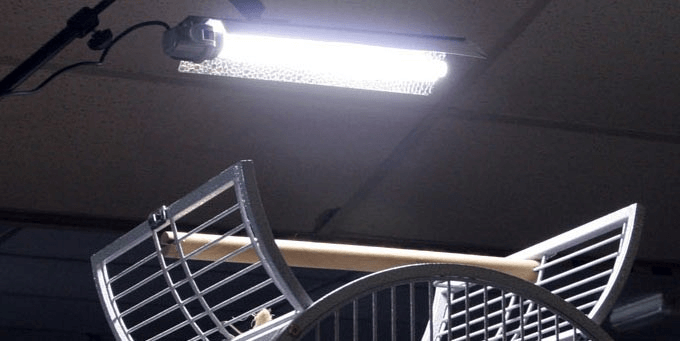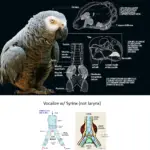
Parrot light: The benefits of UVB rays for pet birds, Breeders, and bird lovers around the world have long believed that natural sunlight and fresh air benefit birds. In countries such as Australia, birds bred in captivity are almost always housed outside. Unfortunately, here in North America many of us cannot keep our birds outside due to the bad weather.
However, with a little knowledge and ingenuity, it is possible to recreate natural sunlight so that the bird gets the same benefits as the sun. Remember that we humans always complain about the lack of light in the office or the long dark winters, so the complaints of creatures whose natural habitat is neither a hallway, nor a mall, nor a living room are justified!
Parrot UV light
A light Let’s first talk about the physiological impact that natural light has on birds. As a veterinarian, one of my biggest concerns about the quality of light is the metabolism of vitamin D. This is the only one that usually requires a particular type of light, the ultraviolet, which comes from the sun so that it is transformed into its active form.
When wild birds ingest vitamin D from their food, the sun’s ultraviolet rays transform this vitamin into an essential element for health, the chemically active form of vitamin D3 (25-dihydroxycholecalciferol). If the birds are not exposed to the sun, they will have a vitamin D deficiency, which can lead to various problems, such as rickets.
In theory, thanks to modern medicine, we can compensate for the lack of direct sunshine by providing birds with a chemically active and artificially made form that resembles our vitamin supplements, but this approach is not without problems. Indeed, some people neglect the recommended dose, and as a result, may compromise the health of their bird, since vitamin D3 can be toxic in too large a quantity.
Unfortunately, the minimum and maximum rate to be served for the majority of bird species is unknown. However, we do know that some parrots, such as macaws, seem particularly susceptible to an overdose of vitamin D3. When nesting macaws live outside and are given a large amount of vitamin D3 supplement (which may be adequate for macaws living indoors), they may overdose. If this is the case, they may suffer from kidney failure, generalized calcification of the tissues, and reproductive problems.
UV light parrot

Lighting for parrots
Lighting Options For Parrots:
Full-spectrum lighting can easily be attached to a cage or hung above an aviary using a light bar. Warning: make sure your birds cannot reach the electrical wires or the tubes.
The question of vitamin D supplements, therefore, requires a little thought. However, in the majority of cases, it cannot be completely dispensed with, since without activated vitamin D, birds housed inside cannot absorb the calcium contained in their food normally, and the results are catastrophic. Young birds, in particular, can develop curved, poorly formed beaks, arched, and soft leg bones, as well as rib and spine deformities. The best method is to provide the bird with an adequate amount of Vitamin D3 and expose it to natural, unfiltered sunlight or full-spectrum lighting, if possible. Full-spectrum fluorescent lighting is known to produce appropriate vitamin D activation in other bird species.
Consult your bird care specialist to ensure proper use of vitamin D supplements, especially if your bird’s diet is based on pellets, the lighting you use is specific or your bird’s habitat is found outside.
UV light for parrots
Artificial ultraviolet rays
Compact fluorescent lighting recreates the natural environment of your birds. Indeed, this type of lighting relieves the psychological distress caused by the change of seasons, in addition to enhancing the colors of your birds’ feathers and providing soothing warmth for an ideal temperature.
We have all seen photos of serious breeders with aviaries lined with special lights and lamps. Many of these breeders install full-spectrum lighting, which can benefit birds for a variety of reasons. This lighting is made up of fluorescent tubes that imitate natural sunlight by producing a wide range of optical radiation.
Full-spectrum lighting includes the essential ultraviolet radiation, essential for the transformation of vitamin D and invisible to the human eye. These are actually medium-energy rays, called UVBs, which activate vitamin D. Full spectrum lighting also comes close to the color palette of outdoor light. By definition, full-spectrum or broad-spectrum lighting (similar meaning) has a high color rendering index (CRI> 88), which means that the color balance is similar to that of natural sunlight at noon, and this lighting has a color temperature between 5,000 K and 6,600 K.
The higher color temperatures than the latter are more like the sun than white fluorescent office lighting. Indeed, fluorescent glass tubes contain inert gases such as argon and are covered with chemical phosphors that emit light at different wavelengths when electrons reach them due to an electric current. These phosphors give fluorescent light its special properties.
Most full spectrum lights are for the reptile market, but some can be valuable for birds. Be aware that no information is available on the exact amount of ultraviolet light needed or safe for indoor birds, and that the percentages of UVB rays appearing on the packaging of a tube are usually not large useful unless you know the total return of this one. However, a little research is needed in order to use this lighting properly.
Your pet store manager can give you the website address or a manufacturer’s customer service number if you have questions about the value of a particular tube for birds. In addition, fluorescent lighting is easy to install and use, but you must follow the manufacturer’s instructions as to when to replace the tubes. Most tubes emit beneficial UVB rays for at least a year. These tubes must be replaced before you can see them wobble because birds see them wobble long before us!
Heater
Like us, birds enjoy sunbathing. Many of the captive species come from very hot climates. Most Australian species, for example, live in semi-arid habitats that commonly exceed 38 ° C during the day.
The conditions of captive birds in North America are often very different. Infrared light can, however, effectively compensate for the lost temperature, and new small infrared bulb “projectors”, which can stay on 24 hours a day and whose red glow does not bother birds at night, are also available.
Infrared light is incandescent radiation very similar to an ordinary light bulb. Incandescent light bulbs emit light and varying amounts of heat when an electric current passes through a metal filament into the empty environment of the bulb. In fact, this type of lighting is used in many pet stores for newly arrived or recently weaned birds from temperature-controlled enclosures.
Birds under stress always have an additional source of heat. However, always make sure that the birds can be protected from places where the heat is very high at the top of the cage. In general, 75-watt infrared bulbs are best for most birds when used in a reflector, which is attached above the cage. Above all, don’t forget to keep all wires and electrical devices away from active jaws!
Light, camera, action
Have you noticed how beautiful the fish in the pet stores are? Pet owners actually use special lighting to enhance the natural beauty of their fish. Most fluorescent light sources produce dazzling effects as much in birds
Related Article:




















